Here are some pictures of the various tropical fruits I grow in my yard! You have to remember that I only started planting these trees six or seven years ago. Most of these trees have not reached full maturity. Some are grafted such as the mangoes and citrus spp. but the majority are from seeds I've collected. Especially some of the rarer things. I'm still collecting too, so I have a lot more to share.
Stay tuned,
Eric
Soursop, Guanabana (Annona muricata)
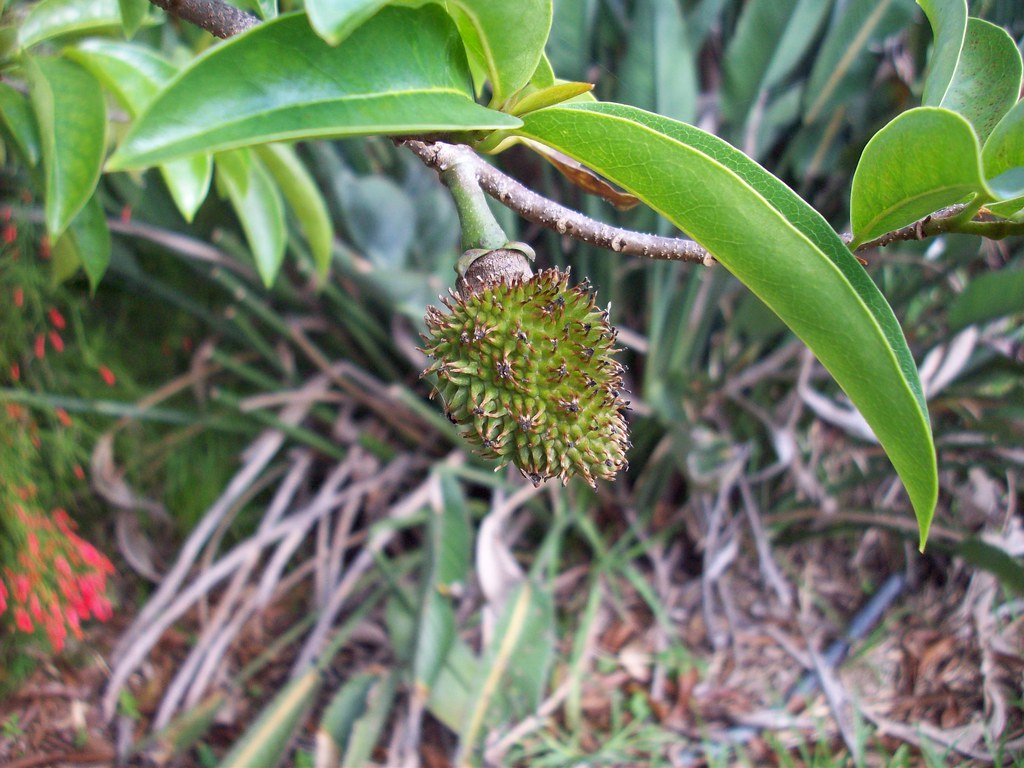
This tree is just a baby like most things in my relatively new yard. It's already producing though.
The only set back is if it gets below 40f it loses all it's leaves below 30f it'll die right to the ground.
This tropical tree is a small evergreen, up to 15 to 20 feet, with leathery, obovate leaves, native to tropical America. Fruits are very large, up to 5 pounds, and heart shaped, dark green in color. The skin is glabrous, but bears numerous fleshy spines. The interior flesh is white, with soft, cottony strands that contain many seeds. Flesh is tart, desirable for ices and ade drinks. It is an important fruit in Puerto Rico and other tropical American areas. It is too tender for culture in continental U.S., except in the warmest parts of Florida.
Sugar Apple, Sweetsop (Annona squamosa)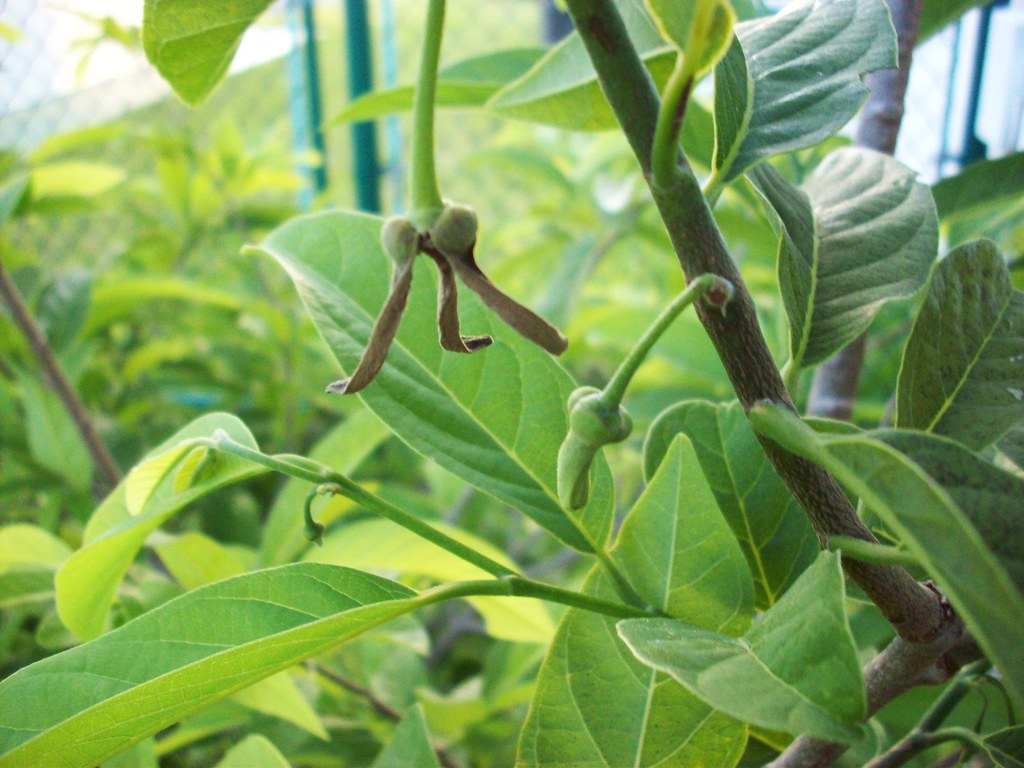 Another species of Annona native to the tropical Americas. Its exact native range is unknown due to extensive cultivation, but thought to be in the Caribbean; the species was described from Jamaica.
Another species of Annona native to the tropical Americas. Its exact native range is unknown due to extensive cultivation, but thought to be in the Caribbean; the species was described from Jamaica.
It is a semi-evergreen shrub or small tree reaching 6-8 m tall. The leaves are alternate, simple, oblong-lanceolate, 5-17 cm long and 2-5 cm broad. The flowers are produced in clusters of 3-4, each flower 1.5-3 cm across, with six petals, yellow-green spotted purple at the base.
The fruit is usually round, slightly pine cone-like, 6-10 cm diameter and weighing 100-230 g, with a scaly or lumpy skin. There are variations in shape and size. The fruit flesh is edible, white to light yellow, and resembles and tastes like custard. The edible portion coats the seeds generously; a bit like the gooey portion of a tomato seed. Sugar-apple has a very distinct, sweet-smelling fragrance. The texture of the flesh that coats the seeds is a bit like the center of a very ripe guava (excluding the seeds). It is slightly grainy, a bit slippery, very sweet and very soft. The seeds are scattered through the fruit flesh; the seed coats are blackish-brown, 12-18 mm long, and hard and shiny.
Passion Fruit (Passiflora edulis)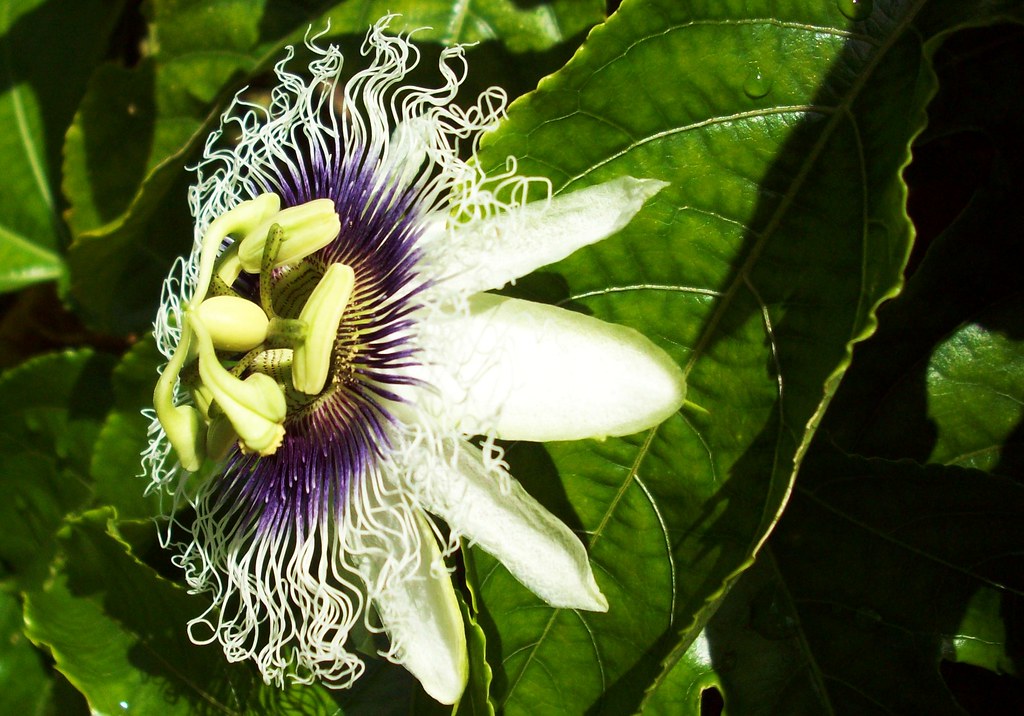

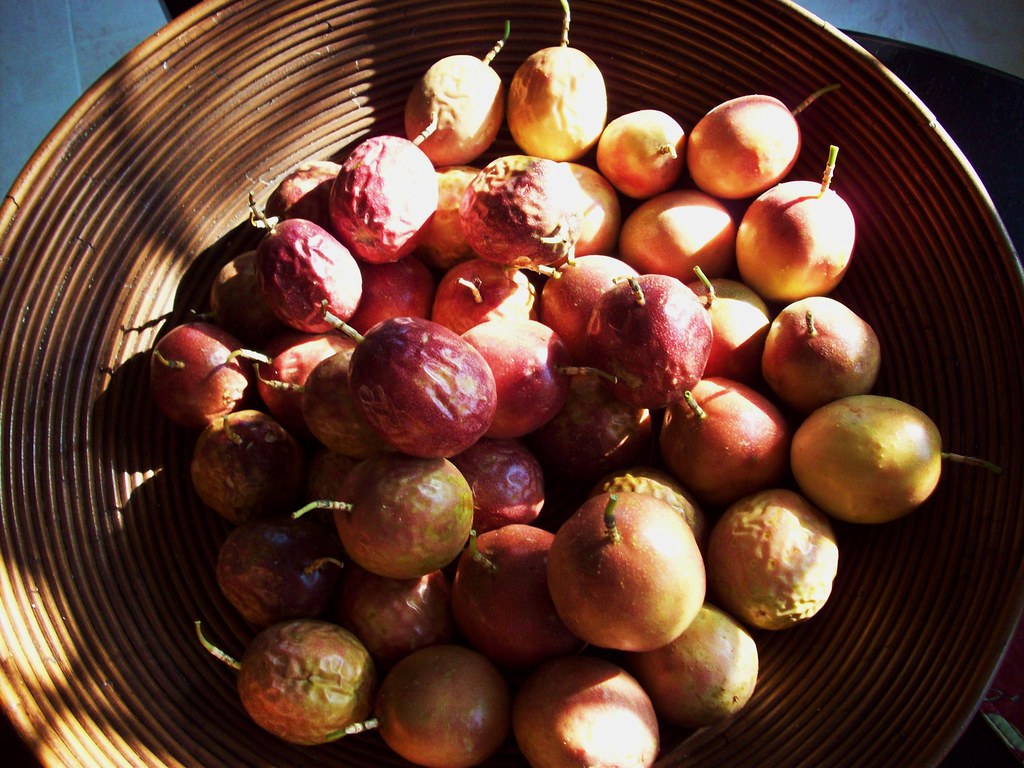
The vine I have is a cultivar called 'Bountiful' as you can see it's living up to it's name. I love passion fruit eaten out of hand, but after a hundred or so fruits. I'm a little burnt-out!!!
The fruits, native to tropical America, are produced on evergreen vines which are tender and require frost-free areas. Vines are trained on trellises similar to grapes and pruned annually either to stubs or canes. Leaves are large and three-lobed. Fruits are generally globose in shape, purple or yellow in color, about two inches diameter. They have a tough outer skin which encloses a mass of seeds, each imbedded in a juicy pulp, the edible portion.
Passion Flower flowers are produced on new growth, and ripe fruits and flowers may be on the plants at the same time.
Mango (Mangifera indica) 'Julie'
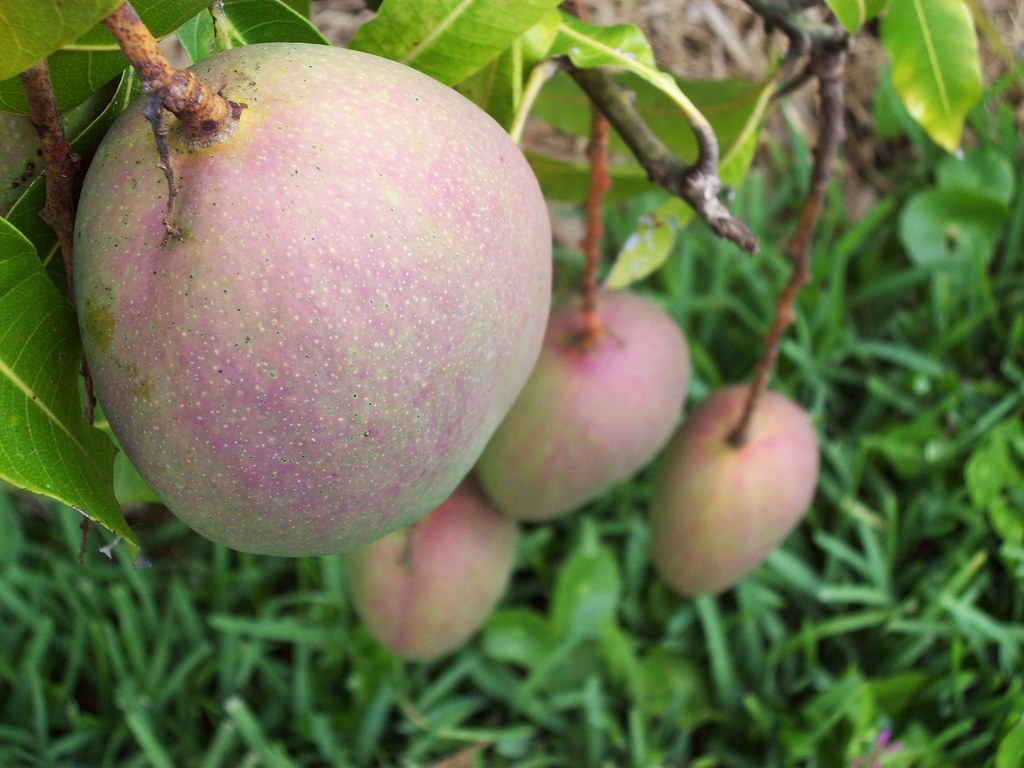
 This is one of two cultivars I grow in my yard. These two cultivars 'Julie'[Jamaica] and 'Neelum'[India] are considered dwarf trees. Perfect for small yards. I had a nice harvest from 'Julie' this year and this tree is only about six years old. It grows slooooooow!!! Fruits ripen to a nice yellow and they taste like a combination of mango, coconut and pineapple.
This is one of two cultivars I grow in my yard. These two cultivars 'Julie'[Jamaica] and 'Neelum'[India] are considered dwarf trees. Perfect for small yards. I had a nice harvest from 'Julie' this year and this tree is only about six years old. It grows slooooooow!!! Fruits ripen to a nice yellow and they taste like a combination of mango, coconut and pineapple.
Mango (Mangifera indica) 'Neelum'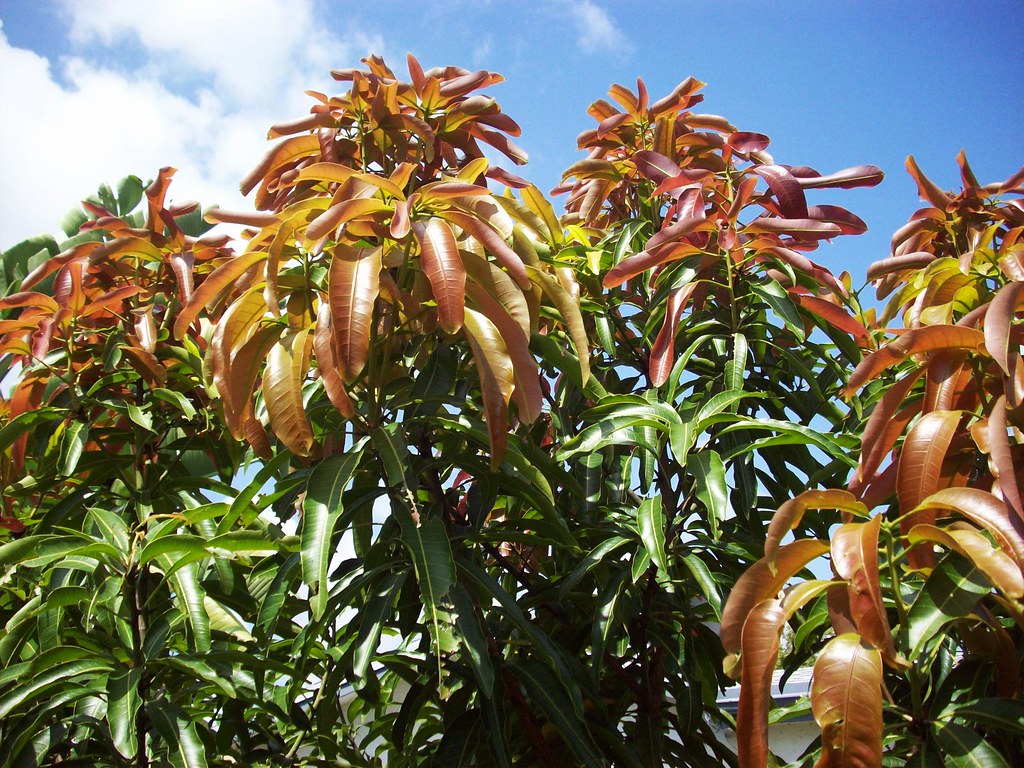
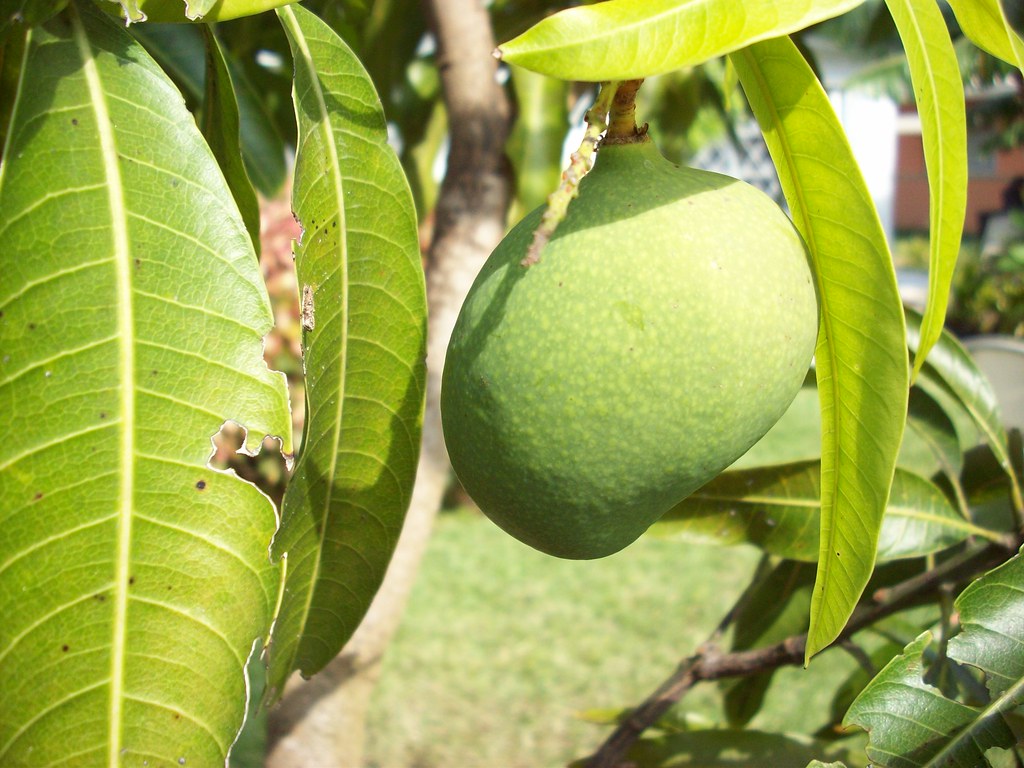
I planted this tree two years ago and I already have fruit! Ok, so it was only two fruits this year, but they were delicious. This tree has small yellow-orange fruit. Which is better when you finish ripening inside. It's has a unique taste combining mango, coconut, and spices.
Charichuelo (Garcinia madruno) This is a very rare fruit from Peru these plants are grown from seeds that I obtained from Mr. Bill Whitman I've been pampering them very carefully. This is an amazing fruit! It looks like a small lemon. When you open it there is a translucent/white flesh surrounding the seed. The flesh tastes like lemony cotton-candy and sort of melts away in your mouth.
This is a very rare fruit from Peru these plants are grown from seeds that I obtained from Mr. Bill Whitman I've been pampering them very carefully. This is an amazing fruit! It looks like a small lemon. When you open it there is a translucent/white flesh surrounding the seed. The flesh tastes like lemony cotton-candy and sort of melts away in your mouth.
Pitomba (Eugenia luschnathiana)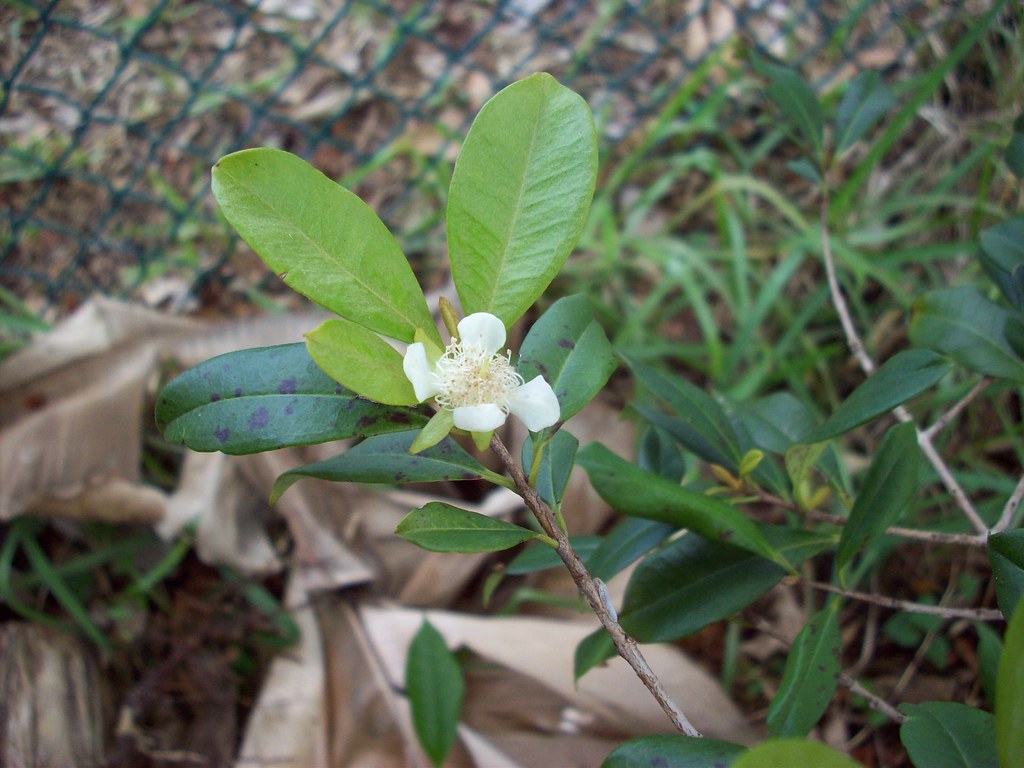
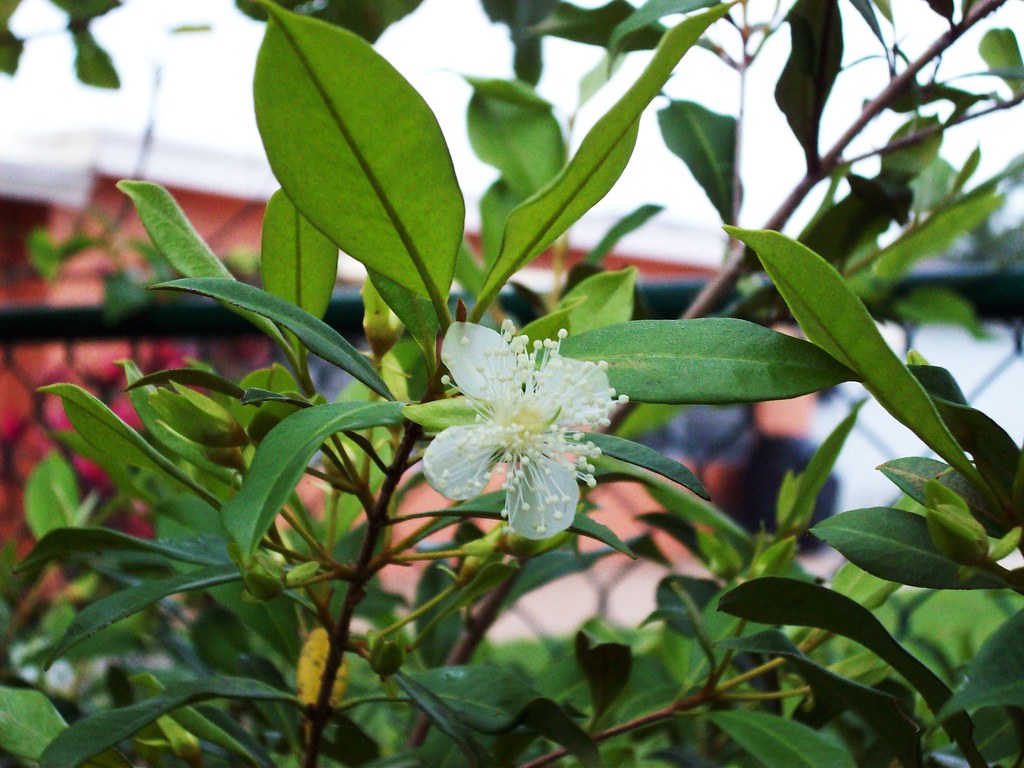
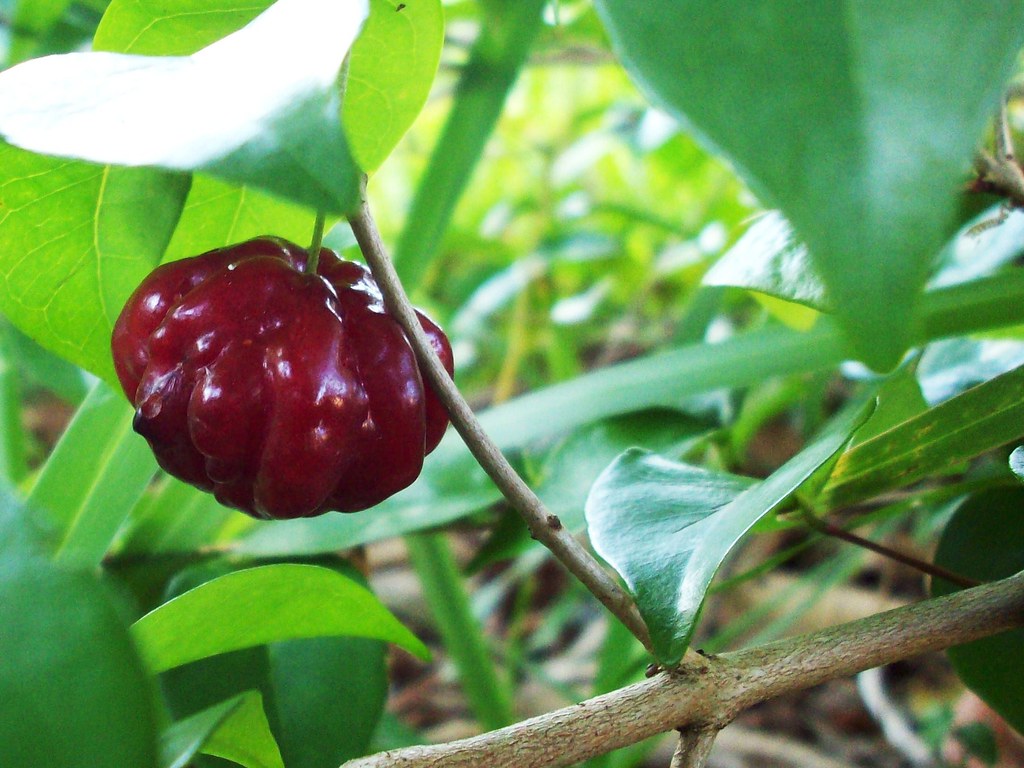 This small tree is a relative to the Surinam Cherry (Eugenia uniflora) seen above and Grumichama (Eugenia brasiliensis). It has showy white flowers which if pollinated, I haven't had it happen yet, produce a small orange cherry-like fruit which has a sweet taste hinting of apricots.
This small tree is a relative to the Surinam Cherry (Eugenia uniflora) seen above and Grumichama (Eugenia brasiliensis). It has showy white flowers which if pollinated, I haven't had it happen yet, produce a small orange cherry-like fruit which has a sweet taste hinting of apricots.
Pineapple (Ananas comosus)

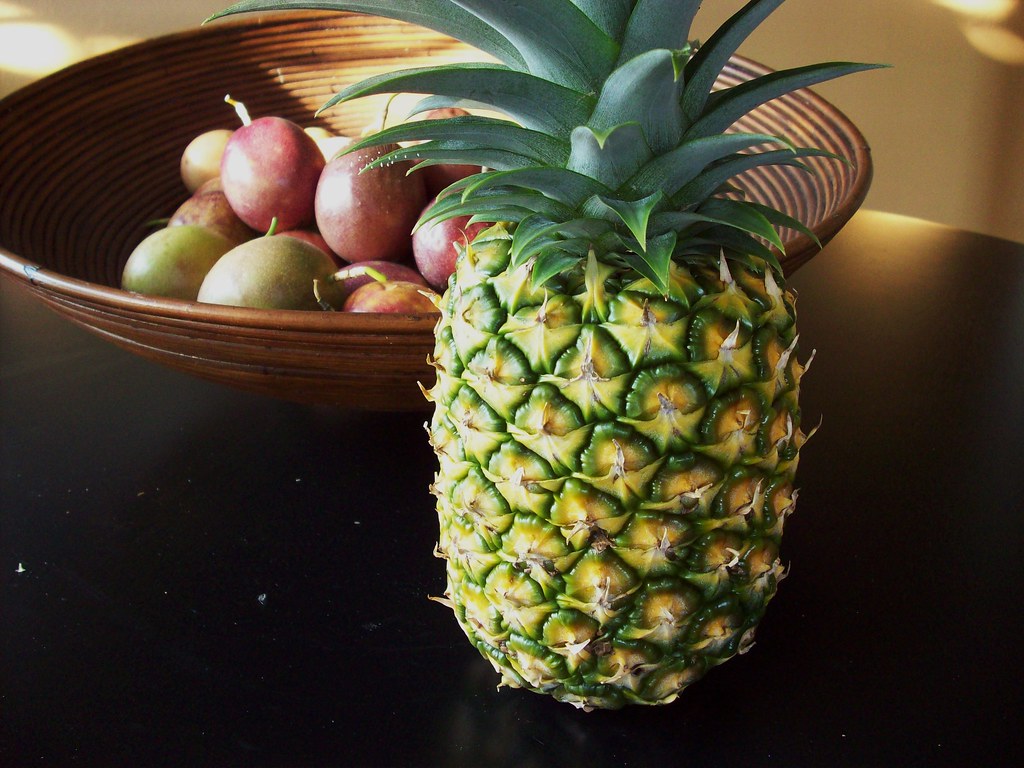 is an edible tropical bromeliad with a berry/fruit (multiple), it is native to Uruguay, Brazil, and Paraguay. It is a medium tall (1–1.5 m) herbaceous perennial plant with 30 or more trough-shaped and pointed leaves 30–100 cm long, surrounding a thick stem.
is an edible tropical bromeliad with a berry/fruit (multiple), it is native to Uruguay, Brazil, and Paraguay. It is a medium tall (1–1.5 m) herbaceous perennial plant with 30 or more trough-shaped and pointed leaves 30–100 cm long, surrounding a thick stem.
Meyer Lemon (Citrus × meyeri)
Is a small citrus fruit tree, native to China, thought to be a cross between a true lemon and a mandarin orange or sweet orange. The Meyer lemon was introduced to the United States in 1908 as S.P.I. #23028, by the agricultural explorer Frank Meyer, an employee of the United States Department of Agriculture who collected a sample of the plant on a trip to China.
Banana (Musa sp.)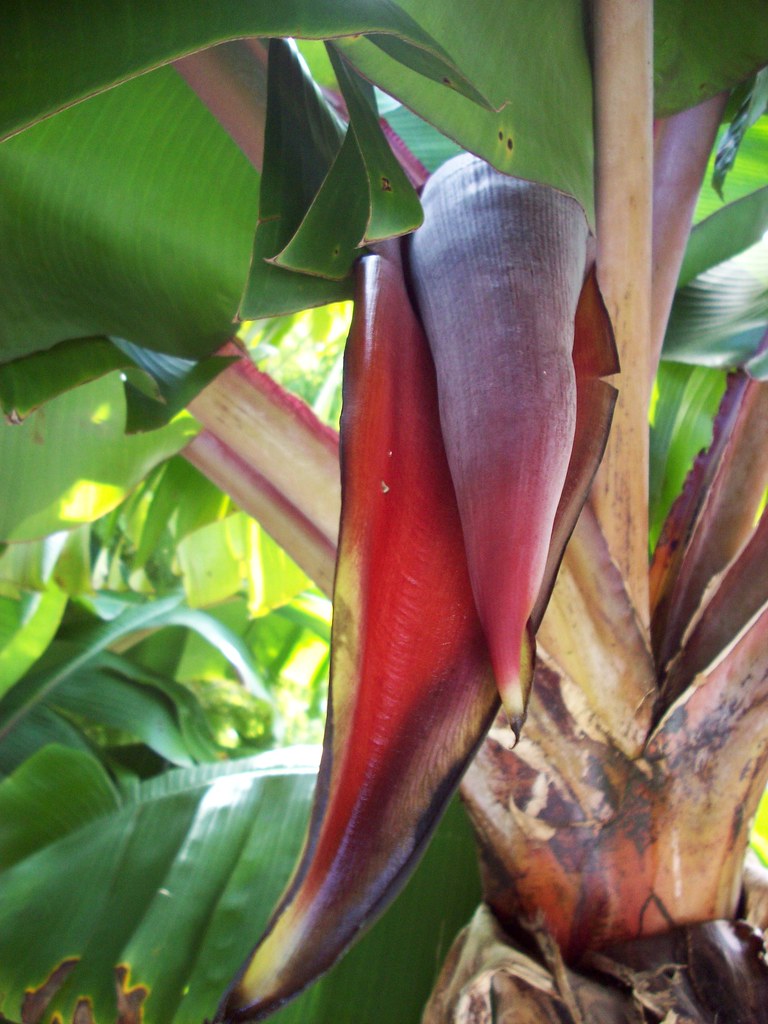
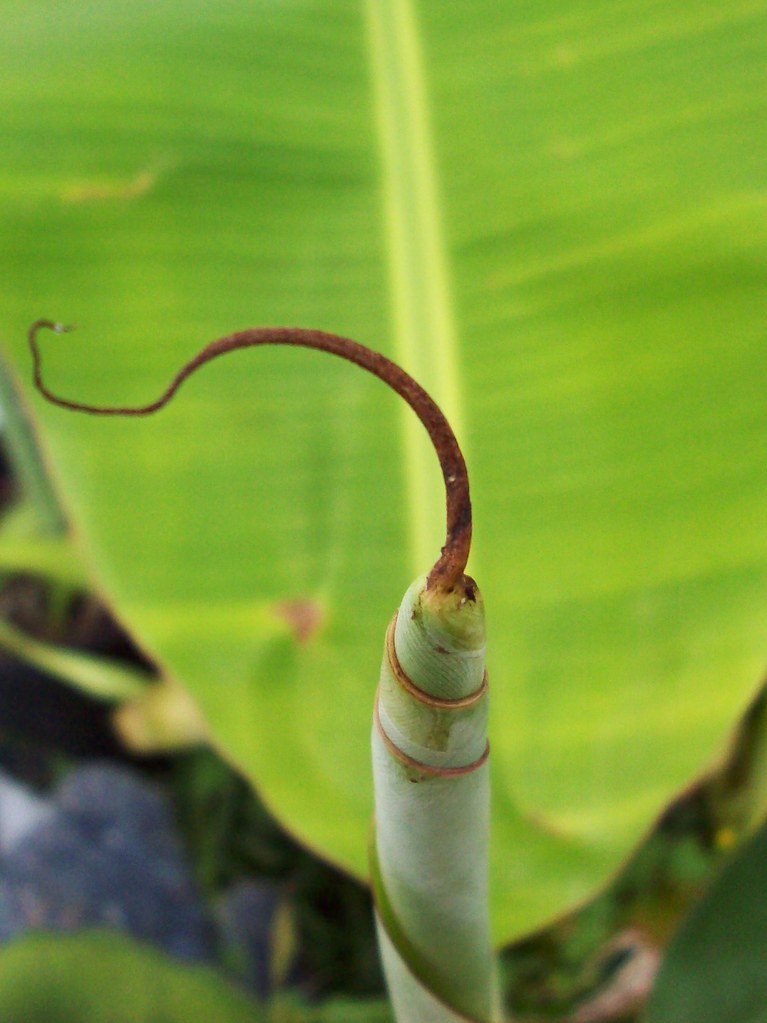 Here's pictures of my two cultivars. 'Jamaican Red' has a small fruit with red skin and orange flesh. This is considered one of the best dessert bananas in the Caribbean. My other banana is from Colombia it has small fruit with a white flush covering it.
Here's pictures of my two cultivars. 'Jamaican Red' has a small fruit with red skin and orange flesh. This is considered one of the best dessert bananas in the Caribbean. My other banana is from Colombia it has small fruit with a white flush covering it.
update 12-12-2008
I have since discussed these fruits in further detail and others as well. You can see these post here http://ilikerareplants.blogspot.com/search/label/tropicalfruits
Enjoy,
Eric
Tropical Fruits by Eric Bronson is licensed under a Creative Commons Attribution-Noncommercial-No Derivative Works 3.0 United States License.
Based on a work at www.flickr.com
Tuesday, July 22, 2008
Tropical Fruits
Posted by Eric Bronson at 8:54 AM
Labels: bill whitman, tropical fruits
Subscribe to:
Post Comments (Atom)

5 comments:
I'm glad you stopped by for a visit to my site. Your post about all of these fruits makes me hungry and wishing to be back in Florida! Our house there is only in zone 8b so we can't grow these wonderful plants like you can. Good luck this year with hurricane season. I find myself holding my breath every time the weather channel shows a storm brewing out there in the Atlantic (especially if it heads for the Gulf). We feel a little more prepared now since Ivan hit (we had just moved to the Pensacola area a few months before that), having installed new, safer windows and storm shutters, but it's still an unnerving feeling when you know one of those things is headed your way.
You do have a unique collection of plants. In my region ( extreme east), the leaves of the passion fruit are used to make a simple dish. Your vine looks deliciously healthy. Enjoyed my visit.
Hello from another tropical fruit fan. I love trying some I've never eaten before. I sprouted the pits of white sapote, mamey, and cherimoya in pots but I am not sure where I'm going to put the trees. You garden may be my inspiration!
Hi! I have a question about your Soursop. Found your blog when I searched for info about this plant. 8 yars ago I went on holiday in Papua New Guinea. Thera I collekted seeds from the fruits I ate. Stupidly enough I put them all in the same bag... I now have a wonderful tree that I think is soursop, but I'm not sure. So my question is: does your tree smell like a mix of black currant & cat pee??
@ Katta in Sweden,
I would say the leaves have an aromatic smell,but I don't about smelling like cat pee!! =)
I did another post about Soursop that you cane see here http://ilikerareplants.blogspot.com/2008/08/annona-muricata-soursop.html
It has lots of photos of the leaves, flowers, etc. maybe that will help with and ID. you could sen me a picture too. I should be able to tell you what it is. My email is on my profile page.
Eric
Post a Comment